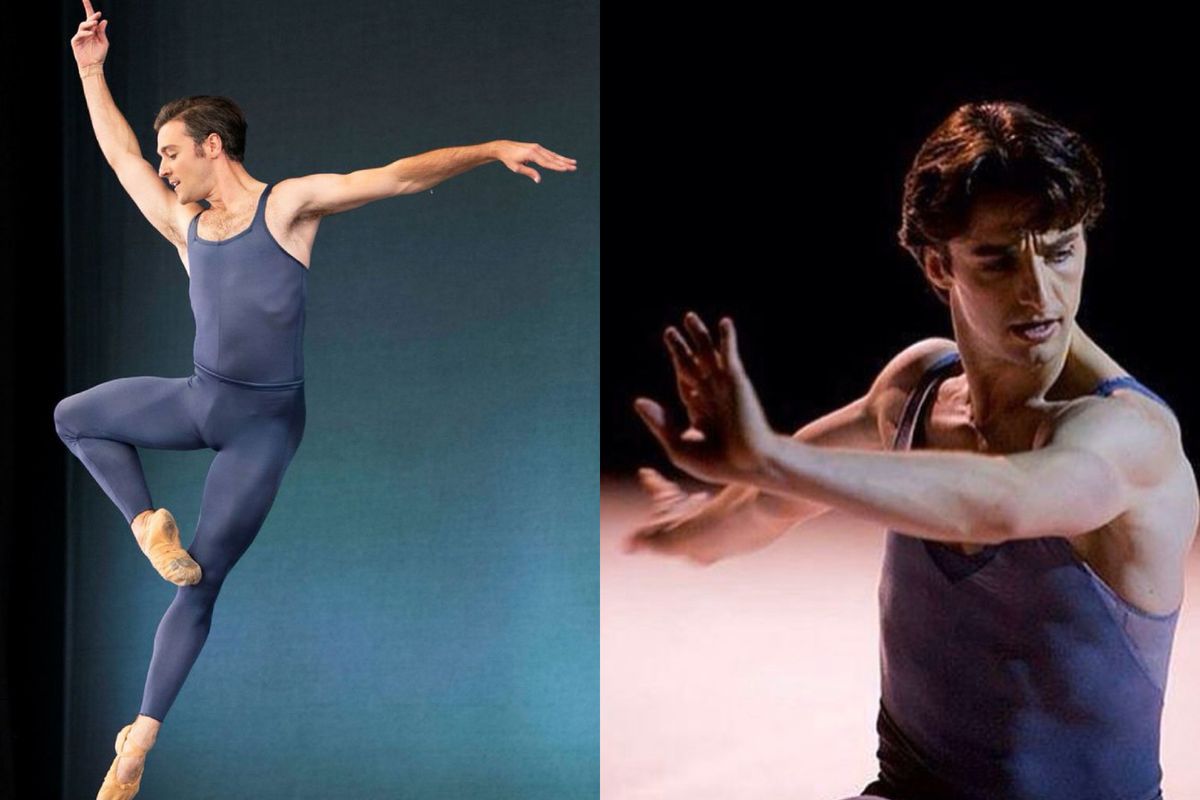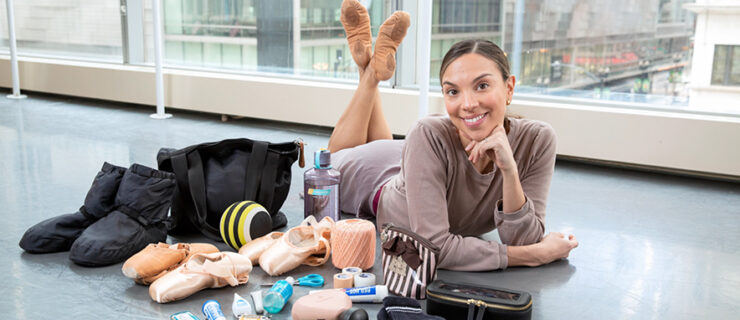Artist-Entrepreneurs Diego Cruz and Rubén Martín Cintas on Creating Community Through Worldwide Ballet Class
A few days after San Francisco Ballet went on coronavirus furlough in mid-March, soloist Diego Cruz led a sheltered-in-place company class on Zoom for 15 fellow SFB dancers. They enjoyed the class—and the camaraderie—so much that they did another one the next day and invited friends from other companies, who brought more friends to a third class the day after. Just like that, Worldwide Ballet Class was born.
Among the many high-quality online ballet classes currently available, WWBC stands out for offering dancers of all levels the opportunity to take open company class alongside professional dancers, six days a week. Held at 11:30 am PDT Monday through Saturday, the classes are taught by the likes of Julie Kent, Christopher Stowell, SFB ballet master Felipe Diaz and National Ballet of Canada principal Jurgita Dronina—and are free of charge. And even though your classmates might include pros such as Gonzalo Garcia, Ashley Murphy-Wilson and Georgina Pazcoguin, there’s no intimidation factor; Cruz and co-founder Rubén Martín Cintas, a ballet master at The Washington Ballet and former SFB principal, keep the mood light, friendly and motivational. Friends since their training days in Spain, the artist-entrepreneurs are also partners in the Paellas & Cos catering outfit and Zarely, a dancewear company that sponsors WWBC. We caught up with Cruz and Cintas to find out how their relaxed, brothers-from-another-mother relationship gives WWBC an upbeat vibe that makes training-in-shelter a happy, hopeful experience.
What makes WWBC so special is that anyone can take top-tier company classes, and you’re so warm and welcoming. It feels like a community, and we all need that right now.
Diego Cruz: That’s how we see it too. You see a lot of the same people, and there are always new people coming in; I’ve met so many people. You can say hi to the teacher and we’re all together.
Rubén Martín Cintas: It’s very easygoing. The way that we are as people, that’s the way we connect with the world.

Courtesy Worldwide Ballet Class
It’s grown so fast, and at the highest level.
DC: Rubén contacted his friends: Julie Kent said yes right away, Christopher Stowell said yes right away. This is a chance for everybody to take class from the best teachers in the world, and watch the best dancers in the world. When I was younger, only in my dreams would I be taking class like this.
You’re a bit like DJs, curating who is shown and making sure the music and visuals flow during class. What are you doing behind the scenes?
RMC: We’re always doing other things at the same time. Diego is doing highlights and working on the posts for Instagram, I am working on the website and the biographies of the teachers.
DC: Before, I hated Instagram. Now I’m on Instagram all day long. It’s a job to do all of the stories, making it look good.
How are you able to offer the classes for free?
DC: I wanted to make it free for everybody. I’m very lucky that at SFB we are still getting paid. We don’t make any money with it; we started a Venmo because people asked to make donations. We use that money to cover the Zoom account and pay the pianist, David Morse.
RMC: Diego and I also co-founded Zarely with a friend of ours in Germany, and we’re able to stream the classes on Zarely’s YouTube channel.

Courtesy Worldwide Ballet Class
Classes routinely get more than 100 dancers. Was Julie Kent’s first class the biggest one so far?
DC: Yes, with like 270 people! On Zoom you have to keep upgrading to have more people. We were regularly having 60, 70 people, but that day I was like, I’m gonna pay to upgrade just in case—good thing, because we were like, oh my god.
How can aspiring dancers make the most of WWBC classes?
RMC: On Zoom you can have your camera open or closed. The dancers that have the camera open go into the first pages on our screens, and those are the ones we choose from to get highlighted during class. The younger dancers are opening their cameras much more, and we’re able to showcase them so the teachers can see them and maybe give feedback. For example, Julie gives her combination and then goes to the camera and gives comments to her dancers and the dancers we spotlight. We showcase as many people as possible.
DC: Julie made so many people’s dreams come true. Even for me—Rubén took me to The Washington Ballet and I met her, and it was such a big deal!
RMC: When Diego teaches class, he is super-aware of encouraging and offering feedback. Julie and Christopher are like that too. The teachers have that generous sense of giving their attention. Sometimes people have the wrong impression of people just because they’re in a certain position. We wanted to show that people are generous, people have big hearts.
WWBC is a unique opportunity for dancers, but it’s also a ray of sunshine during this hard time.
RMC: It’s all about the experience. No matter who the big-name teacher is, we want people to have the best experience possible.
DC: Sometimes people take ballet too seriously. I want people to enjoy it. Now is the time to be happy, not sad.
Find the weekly schedule, which includes beginner/intermediate classes, stretching, conditioning and pointe, on Instagram
@worldwide_ballet_class; classes are live in Zoom room 904-525-5655 and on Zarely’s YouTube page, where select classes are also archived.






